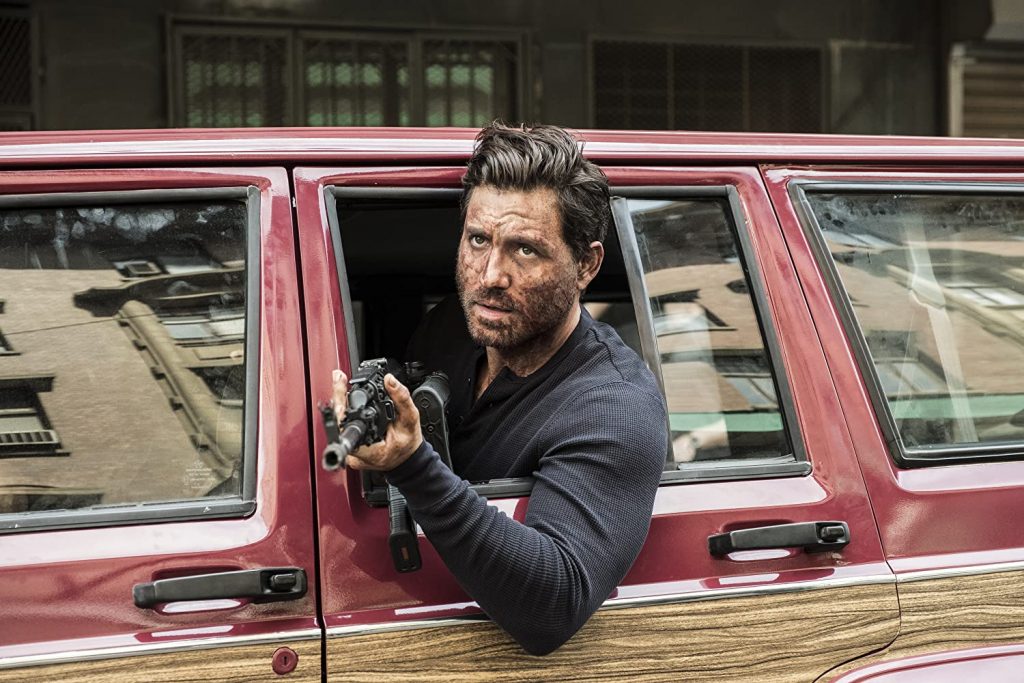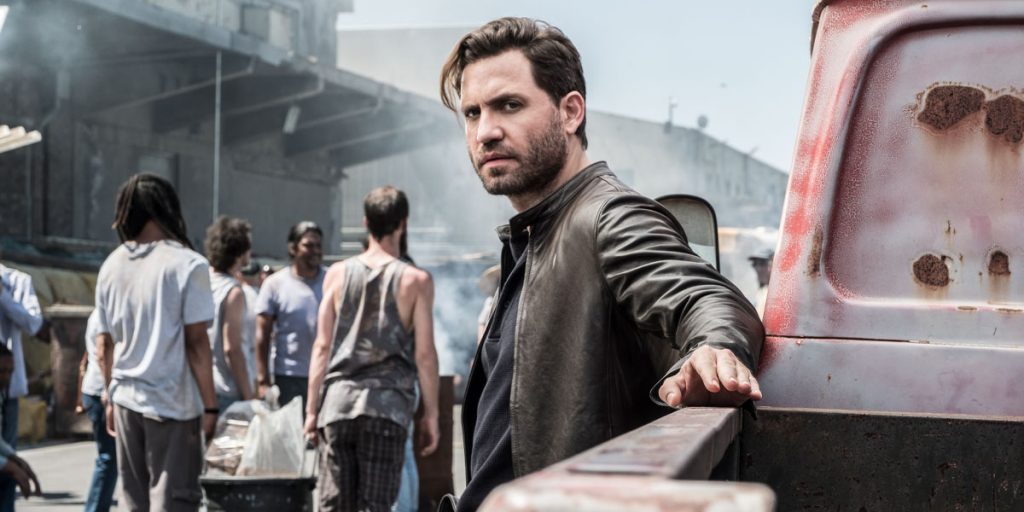In The Last Days of American Crime, Olivier Megaton’s brand of shoddy action direction tanks another good premise.
Director Olivier Megaton is, supposedly, a specialist in action movies – his Hollywood resume consists of The Transporter 3, Taken 2, Taken 3, and Colombiana. Yet, in all his output, I have yet to see him competently direct a single action sequence. In the hands of Mr. Megaton, a fight scene is like a smoothie – a whole bunch of elements ground together into something that is no longer comprehensible as any of the original components – just a fist and a face and a grimace and a fall all mashed together in rapid succession. Megaton once infamously needed fifteen cuts in just five seconds to show Liam Neeson jump over a fence in Taken 3.
And so it was with far too little concern for my own happiness that I dove into The Last Days of American Crime. The film is adapted from a series of comic books by famed writer Rick Remender, who has a long history of provocative premises. Here, he has crafted one hell of an elevator pitch: a bank robber and other assorted toughs assemble to make one last score before the U.S. government turns on a brain control signal that will prevent people from committing crimes. The science is entirely elided, but the premise is juicy enough to draw the mind.
It is, naturally, impossible to avoid the parallels to today’s world, as the last week has seen a self-titled “law and order president” direct the use of tear gas, rubber bullets, and police batons to clear out peaceful protestors in the name of a propagandistic photo op. In part because of that atmospheric, The Last Days of American Crime gets off to a reasonably strong start – the world building surrounding the idea is smartly layered. Violence is rampant and rioting is commonplace. There is a sense of hedonism that permeates the background of early scenes. All the while, the extensions of the government are constantly creeping into the lens. The police are kitted out with assault weapons, armored transports, and body armor. A background Fox News-esque broadcast sports a chryon reading “What about my rights to safety?” superimposed over the image of protestors.

But Megaton does everything he can to squander the premise. The Last Days of American Crime’s biggest problem is its brutal run time: 149 minutes. The first real action sequence – an utterly indecipherable car chase filmed on entirely empty South African streets that resemble no U.S. city – does not take place until nearly 90 minutes into the movie. Had all the set-up time been devoted to earnest character development, it could have worked. Instead we have Edgar Ramirez (the splendid IFC miniseries Carlos) playing surly and humorless. Sharlto Copley (District 9) can often provide a burst of nervy life to genre movies, but here he is muted and lifeless. Michael Pitt (HBO’s Boardwalk Empire) spends a lot of time screaming and mugging in a way that is, evidently, considered acting. Anna Brewster (Versailles), the romantic interest for both Ramirez and Pitt, has electric chemistry with the former, but the character is a problematic retrograde vessel of action movies long departed. She exists only to be ogled by Megaton’s leery camera, and put to the threat of rape and forced heroin injections to motivate our protagonist.
Sometimes a movie bumbles and stumbles its way into relevancy. News reports of the Supreme Court upholding a ban on all travel out of the country and the military shooting down an NBA star attempting to leave the country hit a little closer to home now than they ever could have even a few weeks ago. It is too bad that the underlying film, here, just does not work.
The Last Days of American Crime is available to watch on Netflix.

